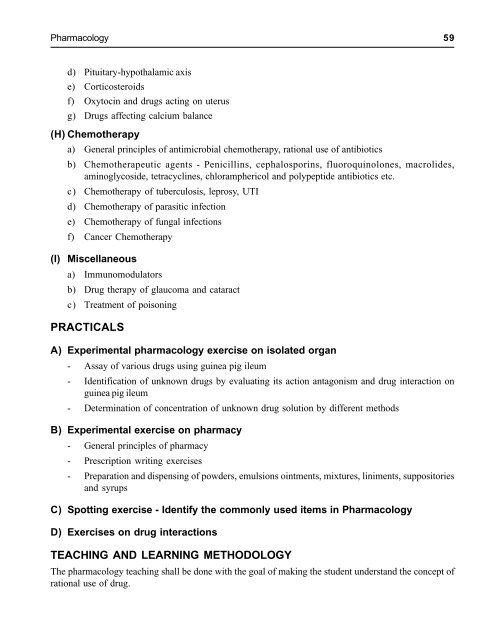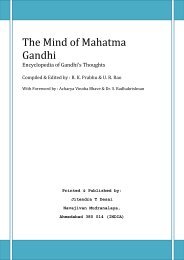Syllabus - MBBS
You also want an ePaper? Increase the reach of your titles
YUMPU automatically turns print PDFs into web optimized ePapers that Google loves.
Pharmacology 59<br />
d) Pituitary-hypothalamic axis<br />
e) Corticosteroids<br />
f) Oxytocin and drugs acting on uterus<br />
g) Drugs affecting calcium balance<br />
(H) Chemotherapy<br />
a) General principles of antimicrobial chemotherapy, rational use of antibiotics<br />
b) Chemotherapeutic agents - Penicillins, cephalosporins, fluoroquinolones, macrolides,<br />
aminoglycoside, tetracyclines, chloramphericol and polypeptide antibiotics etc.<br />
c) Chemotherapy of tuberculosis, leprosy, UTI<br />
d) Chemotherapy of parasitic infection<br />
e) Chemotherapy of fungal infections<br />
f) Cancer Chemotherapy<br />
(I) Miscellaneous<br />
a) Immunomodulators<br />
b) Drug therapy of glaucoma and cataract<br />
c) Treatment of poisoning<br />
PRACTICALS<br />
A) Experimental pharmacology exercise on isolated organ<br />
- Assay of various drugs using guinea pig ileum<br />
- Identification of unknown drugs by evaluating its action antagonism and drug interaction on<br />
guinea pig ileum<br />
- Determination of concentration of unknown drug solution by different methods<br />
B) Experimental exercise on pharmacy<br />
- General principles of pharmacy<br />
- Prescription writing exercises<br />
- Preparation and dispensing of powders, emulsions ointments, mixtures, liniments, suppositories<br />
and syrups<br />
C) Spotting exercise - Identify the commonly used items in Pharmacology<br />
D) Exercises on drug interactions<br />
TEACHING AND LEARNING METHODOLOGY<br />
The pharmacology teaching shall be done with the goal of making the student understand the concept of<br />
rational use of drug.



